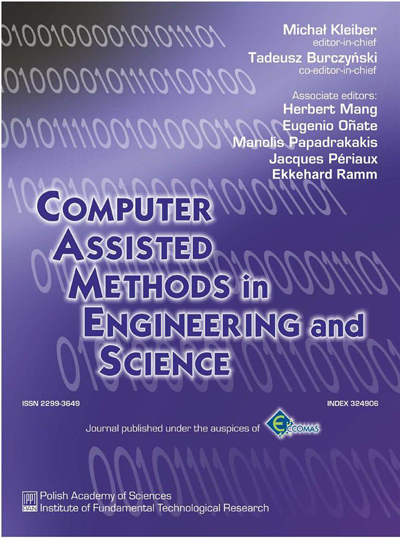Parameter sensitivity of metal forming processes
Abstract
The flow formulation for metal forming analysis based on a rigid-viscoplastic material model is considered. Specifically, sensitivity evaluation techniques are discussed for different solution variables with respect to variations in parameters entering the constitutive (and other) equations such as material constants, imposed velocities or friction coefficient. A method to avoid spurious pressure modes is introduced which allows to use Ql/Ql elements and thus to accurately calculate pressures, their sensitivities and friction forces. In addition, one pressure unknown for each node is available in this method, thus yielding a finer discretisation for this variable.
Keywords
References
[1] G. V. Goon, P. 1. Poluchin, W. P. Poluchin, B. A. Prudcowsky. Plastic deformations of metals (in Russian). Moscow, 1968.[2] O.C. Zienkiewicz, P.C. Jain, E. Onate. Flow of solids during forming and extrusion: some aspects of numerical solutions. Int. J. Solids Structures, 14: 15-38, 1978.
[3] O.C. Zienkiewicz, J.S. Campbell. Shape optimisation and sequential linear programming. In: R.H. Gallagher, O.C. Zienkiewicz, eds., Optimum Structural Design. Wiley, New York, 1978.
[4] E.J. Haug. A review of distributed parameter structural optimization literature. In: E.J. Haug, J. Cea, eds., Optimization of distributed parameter structures. Sijthoff-Nordhoff, Alphen aan den Rijn, 1981.
[5] E.J. Haug, J.S. Arora. Applied optimal design. Wiley, New York, 1979.

This work is licensed under a Creative Commons Attribution 4.0 International License.




